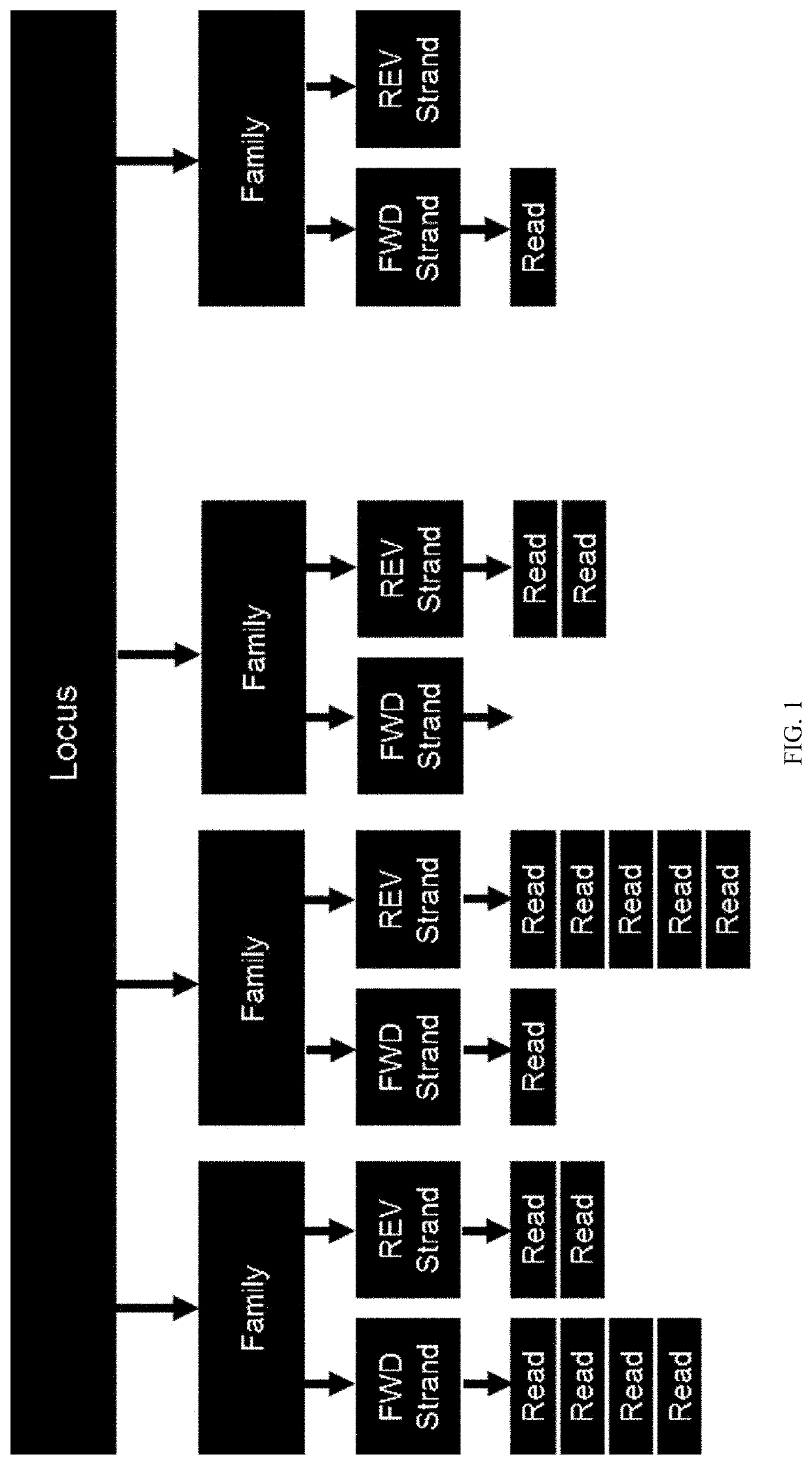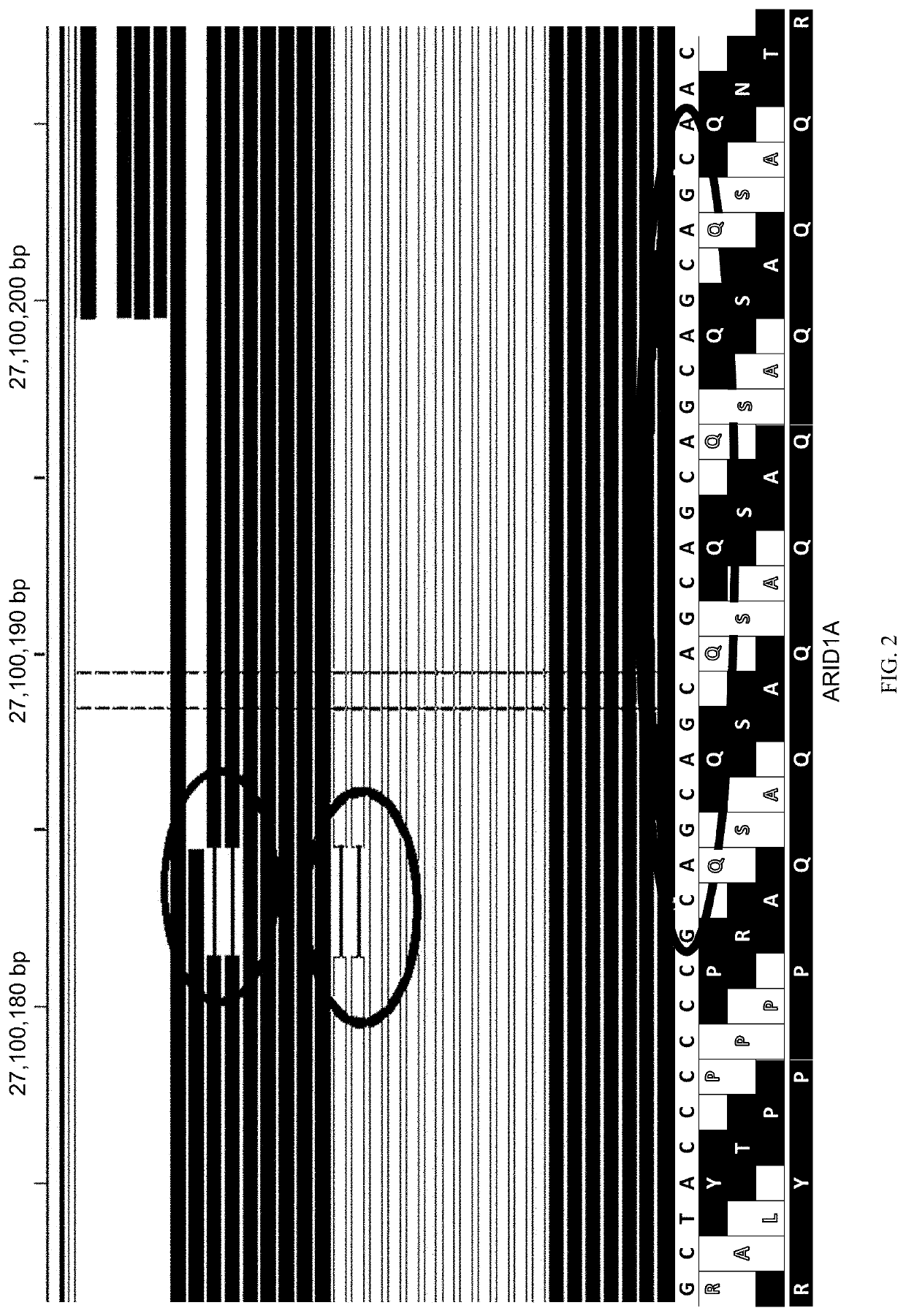Methods for multi-resolution analysis of cell-free nucleic acids
a cell-free nucleic acid and multi-resolution technology, applied in the field of cell-free nucleic acid multi-resolution analysis, can solve the problems of reducing the sensitivity of detection at the hotspot region, the size of the overall panel, and the limited amount of sequencing data that can be obtained from a sample, so as to maximize the ranking function of sequencing load and utility, improve the accuracy of detecting an insertion, and improve the effect of capture efficiency
- Summary
- Abstract
- Description
- Claims
- Application Information
AI Technical Summary
Benefits of technology
Problems solved by technology
Method used
Image
Examples
example 1
l Performance Assessment
[0180]Analytical sensitivity (as defined by the limit of detection and by positive percent agreement) and precision were assessed throughout the reportable allelic fraction and copy number ranges via multiple serial dilution studies of orthogonally-characterized contrived material and patient samples. Analytical specificity was assessed by calculating the false positive rate in pre-characterized healthy donor sample mixtures serially diluted across the lower reportable range down to allelic fractions below the limit of detection. Positive predictive value (PPV) was estimated as a function of allelic fraction / copy number from pre-characterized clinical patient samples and prevalence-adjusted using a cohort of 2,585 consecutive clinical samples. Orthogonal qualitative and quantitative confirmation was performed using ddPCR.
[0181]Analytical performance is summarized in Table 7 below. Analytical specificity was 100% for single nucleotide variants (SNVs), fusions,...
example 2
nd Backbone Titration
[0185]In this experiment, the appropriate probe replication and the saturation point for each panel were determined. Hotspot and backbone panels were designed for both default probe replication and optimized probe replication. The hotspot panel is approximately 12 kb and targets regions of genomic targets that may be indicative of drug response, a disease status (e.g., cancer), and / or a genomic target listed under National Comprehensive Cancer Network (“NCCN”) guidelines. The backbone panel is approximately 140 kb and covers the rest of the panel content. The hotspot and backbone panel may comprise any genetic locations in Table 3. A titration experiment was performed for panel input amount for each of the four panels at 5 ng, 15 ng, and 30 ng of cfDNA as set forth in Table 1. FIG. 6 shows input amount versus unique molecule count for the generic panel. The unique molecule count saturated at about Vol. 3× for the backbone bait and about Vol. 1.2× for the hotspot...
example 3
Capturing of a Hotspot Region
[0186]Based on the saturation point of each panel in Example 2, a concentration of backbone bait and a concentration of hotspot bait were determined. A mixture of backbone bait (e.g., Vol. A) and hotspot bait (e.g., Vol. B) was generated and the molecule count for the hotspot / backbone bait mixture was compared with molecule count for a generic panel. The molecule counts from the hotspot panel were higher than the backbone panel. The difference became more noticeable at higher cfDNA input amount as the backbone bait saturated out much faster, e.g., at lower input amount, as compared to the hotspot bait. A similar trend was seen with the double-stranded count (data not shown). Family size was also higher for the hotspot panel than the backbone panel (data not shown). The difference in family sizes may indicate that the hotspot panel is capturing more than the backbone panel, despite that the effect was masked with molecule counts. For example, with the lar...
PUM
| Property | Measurement | Unit |
|---|---|---|
| concentration | aaaaa | aaaaa |
| nucleic acid sequence | aaaaa | aaaaa |
| concentrations | aaaaa | aaaaa |
Abstract
Description
Claims
Application Information
 Login to View More
Login to View More - R&D
- Intellectual Property
- Life Sciences
- Materials
- Tech Scout
- Unparalleled Data Quality
- Higher Quality Content
- 60% Fewer Hallucinations
Browse by: Latest US Patents, China's latest patents, Technical Efficacy Thesaurus, Application Domain, Technology Topic, Popular Technical Reports.
© 2025 PatSnap. All rights reserved.Legal|Privacy policy|Modern Slavery Act Transparency Statement|Sitemap|About US| Contact US: help@patsnap.com



